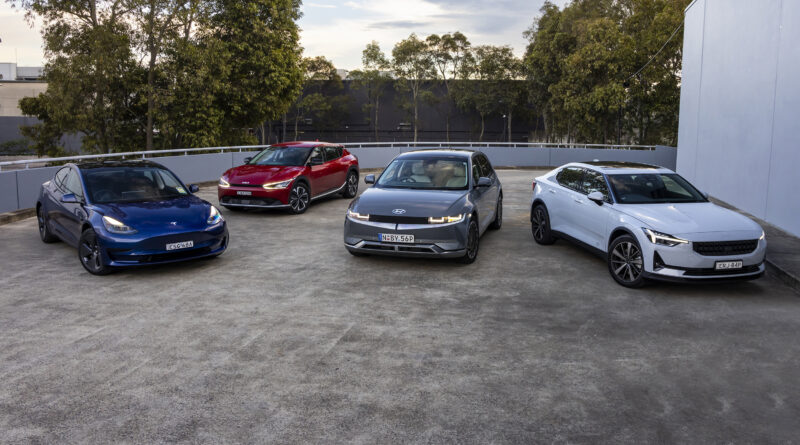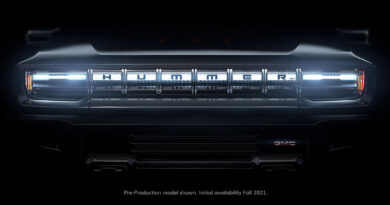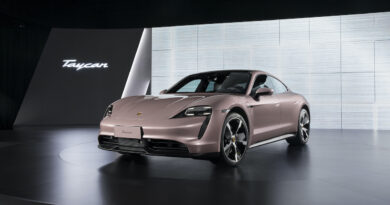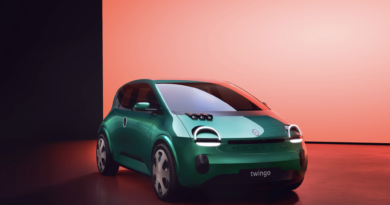2022 EV sales record: Top selling electric cars revealed
Last year was a record for EV sales in Australia. No surprises given they’re coming off a low base.
Australians bought 33,410 EVs in 2022, according to figures supplied by the Federal Chamber of Automotive Industries (FCAI). That represents a 94 percent increase over 2021 (once you take into account Tesla’s 2021 sales that weren’t reported to the FCAI).
It means EV set a new record of 3.1 percent of the 1,081,429 vehicles sold.
READ MORE: Every EV coming to Australia in 2023
READ MORE: Best EVs of 2022
It’s a small percentage, but a significant gain over 2021 – and represents the next advance of EVs locally.
Delve deeper into the figures supplied by the FCAI and there are plenty of interesting insights.
22% of luxury cars are EVs
It’s clear the premium price of EVs is less of an issue in the world of premium cars. Or buyers are chasing the refinement, performance and convenience of owning an EV. It’s likely a mix of both.
Of the 119,910 prestige and luxury vehicles sold here in 2022, 22.0 percent were EVs.
Sure, the result is skewed heavily by Tesla and Polestar. Tesla’s 19,594 sales alone accounted for 59 percent of all EVs sold in Australia last year.
And Polestar’s tally of 1524 cars was second best in the premium space, outdoing Volvo (1474), BMW, (1293), Mercedes-Benz (1166) and Mini (455).
Some luxury brands already have a high proportion of EVs in their sales.
With 430 of it sales the Taycan (which people are queuing to own), it means 7.7 percent of the record 5608 Porsches sold here in 2022 were purely electric.
And 15.1 percent of Minis sold here were EVs, as well as 13.8 percent of Volvos. Mercedes-Benz’s EV mix was more modest, at 4.4 percent.
7.2% of passenger cars are EVs
There’s decent sales EV strength in certain pockets of the market.
Honing in on passenger cars (hatchbacks, sedans, wagons, coupes and convertibles) reveals that 7.2 percent of them were EVs.
Of 22,263 medium cars sold – everything from the Mazda6 and Volkswagen Passat to the BMW 3-Series and Mercedes-Benz C-Class – 57 percent of them were EVs. So more than half of all medium car buyers across all price brackets opt to splash out a bit more on an EV.
The SUV number isn’t quite as impressive but still shows there’s increasing EV interest. Some 3.3 percent of the 574,632 SUVs sold in 2022 were electric.
Considering there are no EVs on offer to tackle the more than 50,000 Toyota Prados, LandCruisers, Ford Everests and Nissan Patrols that dominate off-road, it’s an impressive feat.
Of course one area EVs have almost no presence is commercial vehicles. The first electric ute just went on sale (only two were registered as sold for 2022) and there are electric vans coming soon. But with more than one quarter of the market made up of commercial vehicles it’s a space EV makers need to get serious about.
Tesla, Polestar and BYD accounted for 70% of EV sales
Tesla, Polestar and BYD are the big guns of the local EV landscape, for now at least. Between them they accounted for 70 percent of the EVs sold in Australia in 2023.
For three brands most hadn’t heard of a few years ago, it’s a remarkable achievement in what is one of the most competitive car markets in the world.
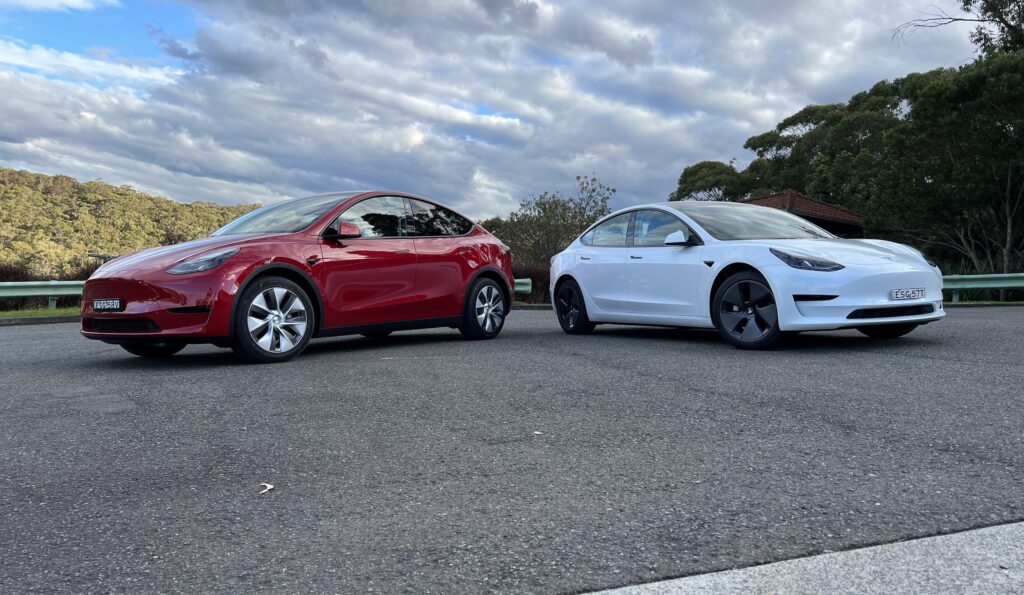
Tesla was the big hitter, single-handedly accounting for 59 percent of Australia’s EV sales.
But BYD’s four months’ worth of sales tallying 2113 vehicles was a big effort that reinforces the pent-up demand for electric vehicles – and the willingness to accept newcomers.
Polestar’s result is impressive, too, especially when compared with other mid-sized sedans/hatches/wagons.
In its first year on sale the Polestar 2 outsold the Audi A4/A5, Lexus ES, Mazda6, Skoda Octavia, Volkswagen Passat and Hyundai Sonata.
The Polestar result was also strong for a newcomer brand few people had heard of, especially when you consider there was only a single model on sale. Compare it with the first year of Australian sales for MG, Skoda, Opel and Haval and the Polestar result is even more astonishing (each of those others managed a smaller market share, often by some margin).
Conversely, big guns such as Toyota, Volkswagen, Mitsubishi, Isuzu and Subaru didn’t sell a single EV between them – and Ford logged one of its upcoming E-Transits as sold in 2022.
Mazda sold only 55 EVs and Hyundai and Kia managed 3381 EVs between them.
So the biggest brands in the country managed just 3437 EV sales.
79% of the EVs sold in Australia were sourced from China
Most EVs sold in Australia come from China.
That includes models from Chinese-owned brands, including LDV and MG.
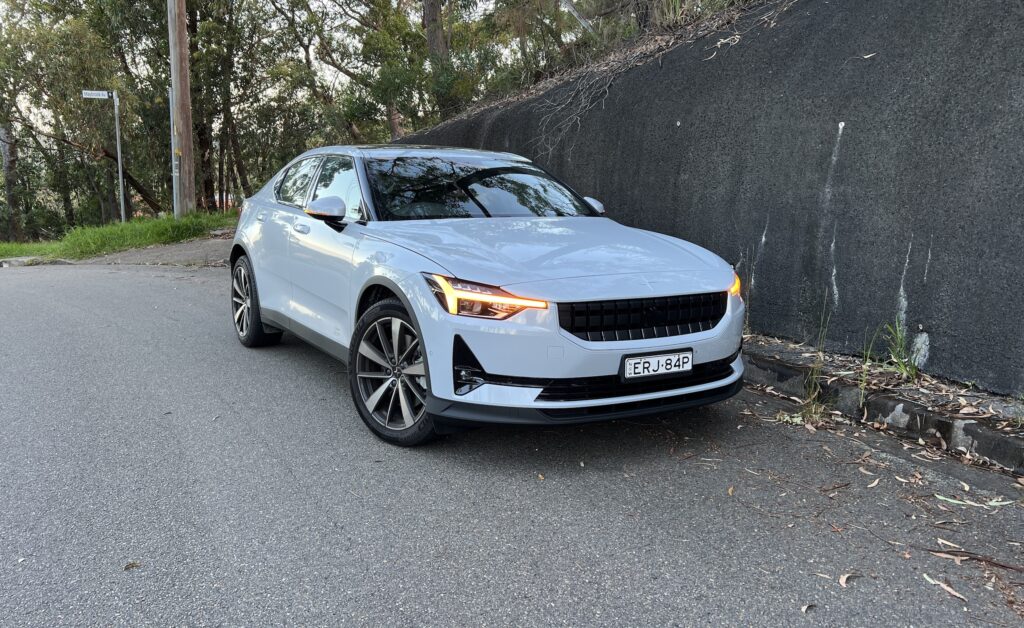
But the big hitters from China are all models from Tesla, Polestar and Volvo as well as the BMW X3.
Between them they accounted for 26,426 EVs sold here in 2022.
That also means that 21.5 percent of the cars that were sent to Australia from China had no internal combustion engine.
BYD wins the affordable SUV sales race
It was only on sale for a few months but the BYD Atto 3 has emerged a clear winner against its most logical rival, the MG ZS EV.
BYD sold 2113 Atto 3s versus MG’s 1119 ZS EVs.
To be fair, the MG wasn’t on sale for most of the year either, although the brand has been around for a lot longer and has better recognition.
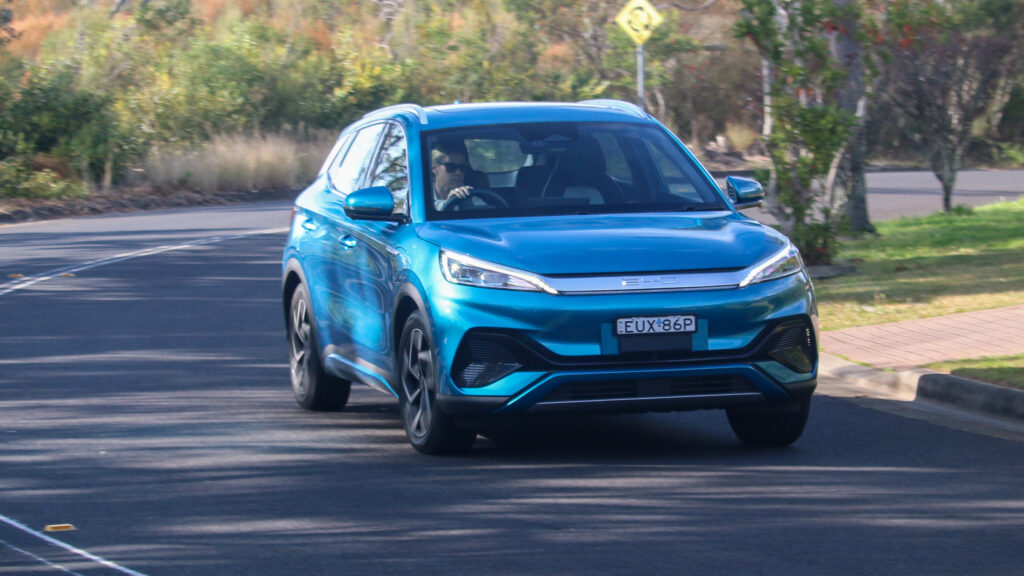
Still, it seems the BYD hype – it used to outsell Tesla on EVs until 2019 and has a big online following – has filtered through to Aussie consumers.
Some brands went backwards on EVs
The electric car market is growing, but not all brands enjoyed the sales spoils.
Despite being a major player, MG’s EV sales dropped 19.4 percent in 2022.
The Porsche Taycan also dropped by 19 percent, but mostly due to a shortage of supply and a bumper first year for the high-performance EV in 2021.
The Nissan Leaf also slid 9.8 percent and the Mazda MX-30 12.7 percent.
For Jaguar, the I-Pace continues to be a slower seller (just 23 sold, down 47 percent) while BMW’s i3 was discontinued.
Also, the Model 3 was the top EV seller for 2022 but Tesla actually sold fewer last year than it did in 2021. The lesser sales number was due to the arrival of the Tesla Model Y, the second best selling EV for 2022.
EVs are making a big impact on some segments
EVs are playing with the big boys in some market segments.
The Tesla Model 3, for example, is now the top selling mid-sized car in the country.
It not only outsold the Toyota Camry – ending its 28-year run at the top of the medium car sales charts – but also trounced the Mazda6, Volkswagen Passat, Mercedes-Benz C-Class, BMW 3-Series and Audi A4, among others.
The Tesla Model Y, too, is now a significant force in the mid-sized SUV category.
It was comfortably the top selling mid-sized SUV priced above $60K, with 8717 sales. That’s well up on the Mercedes-Benz GLC (5856 for coupe and SUV body styles), BMW X3/X4 (5437, 593 of which were the electric iX3 model) and Audi Q5 (3210).
The Model Y was also the eighth best-selling mid-sized SUV outright, even beating the Nissan X-Trail, Volkswagen Tiguan and Honda CR-V – and not far behind the Subaru Forester and MG HS.
PHEVs are still tiny in Australia
Plug-in hybrid sales are growing, but not by much.
In 2022 there were 5937 PHEVs sold locally, a 76 percent increase on the prior year.
But those PHEV sales were coming from a very low base. We only bought 2565 more PHEVs in 2022 than we did in 2021.
For every PHEV that’s sold in Australia 5.6 EVs are sold.
EV sales in Australia in 2022 by make and model
EV sales in Australia in 2022 by make and model
| Rank | Make and model | 2021 sales | 2022 sales | % change |
| 1 | Tesla Model 3 | 12,094 | 10,877 | -10.0% |
| 2 | Tesla Model Y | 0 | 8717 | – |
| 3 | BYD Atto 3 | 0 | 2113 | – |
| 4 | Polestar 2 | 0 | 1524 | – |
| 5 | MG ZS EV | 1388 | 1119 | -19.4% |
| 6 | Hyundai Kona | 505 | 1096 | +117% |
| 7 | Volvo XC40 | 207 | 983 | +375% |
| 8 | Hyundai Ioniq 5 | 172 | 756 | +340% |
| 9 | Mercedes-Benz EQA | 367 | 624 | +70% |
| 10 | BMW iX3 | 62 | 593 | +856% |
| 11 | Hyundai Ioniq Electric | 339 | 580 | +71% |
| 12 | KIa EV6 | 0 | 564 | – |
| 13 | Volvo C40 | 0 | 491 | – |
| 14 | BMW iX | 35 | 477 | +1263% |
| 15 | Mini Hatch Electric | 291 | 455 | +56% |
| 16 | Porsche Taycan | 531 | 430 | -19.0% |
| 17 | Kia Niro | 217 | 385 | +77% |
| 18 | Nissan Leaf | 367 | 331 | -9.8% |
| 19 | Mercedes-Benz EQC | 298 | 318 | +6.7% |
| 20 | BMW i4 | 0 | 207 | – |
| 21 | Mercedes-Benz EQB | 0 | 141 | – |
| 22 | Audi e-Tron | 108 | 129 | +19.4% |
| 23 | Genesis GV60 | 0 | 114 | – |
| 24 | Lexus UX300e | 43 | 82 | +91% |
| 25 | Mercedes-Benz EQS | 0 | 70 | – |
| 26 | Mazda MX-30 EV | 63 | 55 | -12.7% |
| 27 | Renault Kangoo | 45 | 49 | +8.9% |
| 28 | Genesis Electrified GV70 | 0 | 44 | – |
| 29 | Jaguar I-Pace | 44 | 23 | -48% |
| 30 | Genesis Electrified G80 | 0 | 16 | – |
| 31 | Audi e-Tron GT | 0 | 13 | – |
| 32 | BMW i7 | 0 | 13 | – |
| 33 | Mercedes-Benz EQV | 0 | 10 | – |
| 34 | LDV Deliver 9 | 0 | 5 | – |
| 35 | BMW i3 | 67 | 3 | -96% |
| 36 | LDV MIFA 9 | 0 | 2 | – |
| 37 | Mercedes-Benz e-Vito van | 0 | 2 | – |
| 38 | LDV eT60 | 0 | 2 | – |
| 39 | Cupra Born | 0 | 1 | – |
| 40 | Mercedes-Benz e-Vito people mover | 0 | 1 | – |
| 41 | Ford E-Transit | 0 | 1 | – |
EV sales in Australia in 2022 by brand
| Rank | Brand | 2021 sales | 2022 sales | % change |
| 1 | Tesla | 12,094 | 19,594 | +62% |
| 2 | Hyundai | 1016 | 2432 | +169 |
| 3 | BYD | 0 | 2113 | – |
| 4 | Polestar | 0 | 1524 | – |
| 5 | Volvo | 207 | 1474 | +612% |
| 6 | BMW | 164 | 1293 | +688% |
| 7 | Mercedes-Benz | 665 | 1166 | +75% |
| 8 | MG | 1388 | 1119 | -19% |
| 9 | Kia | 217 | 949 | +337% |
| 10 | Mini | 291 | 455 | +56% |
| 11 | Porsche | 531 | 430 | -19% |
| 12 | Nissan | 367 | 331 | -9.8 |
| 13 | Genesis | 0 | 174 | – |
| 14 | Audi | 108 | 142 | +31% |
| 15 | Lexus | 43 | 82 | +91% |
| 16 | Mazda | 63 | 55 | -12.7% |
| 17 | Renault | 45 | 49 | +8.9% |
| 18 | Jaguar | 44 | 23 | -48% |
| 19 | LDV | 0 | 9 | – |
| 20 | Cupra | 0 | 1 | – |
| 21 | Ford | 0 | 1 | – |

